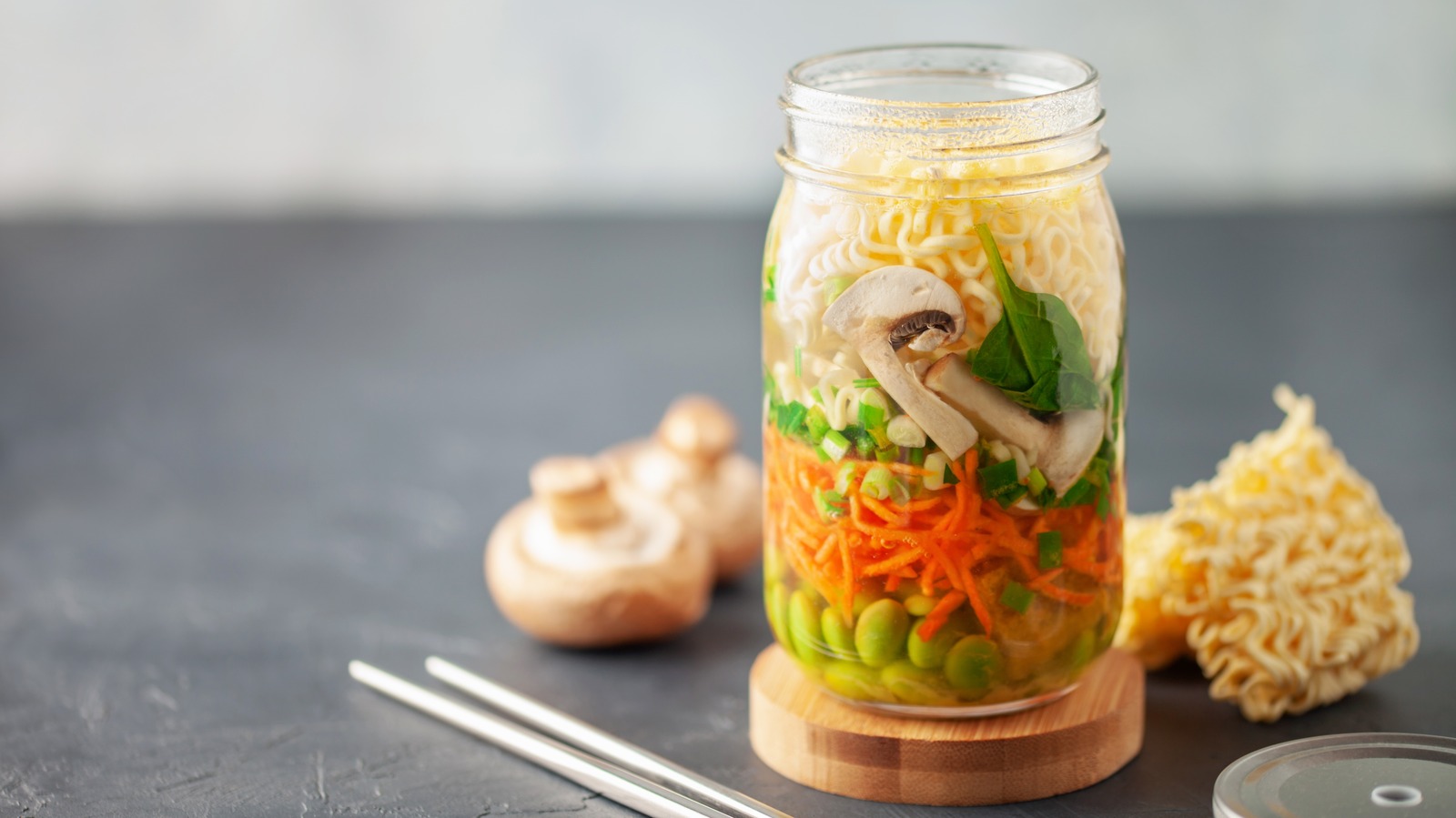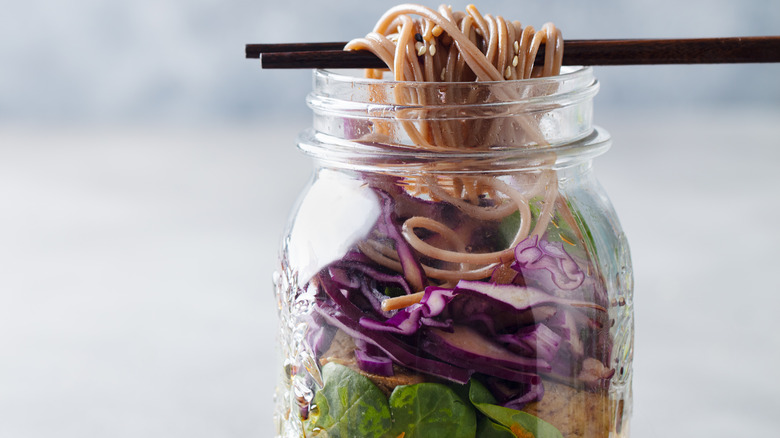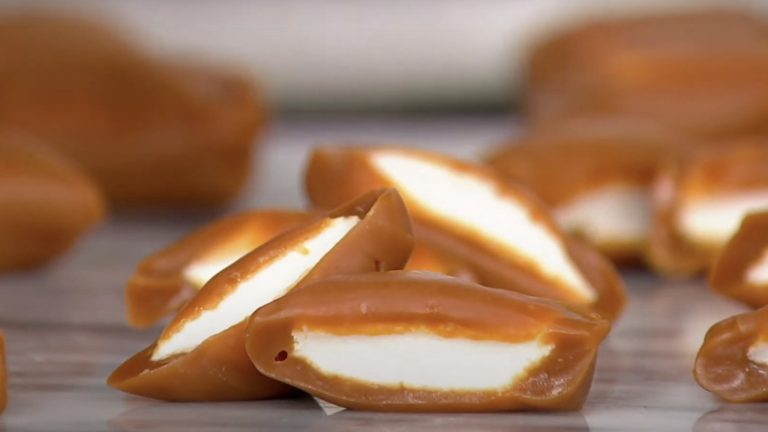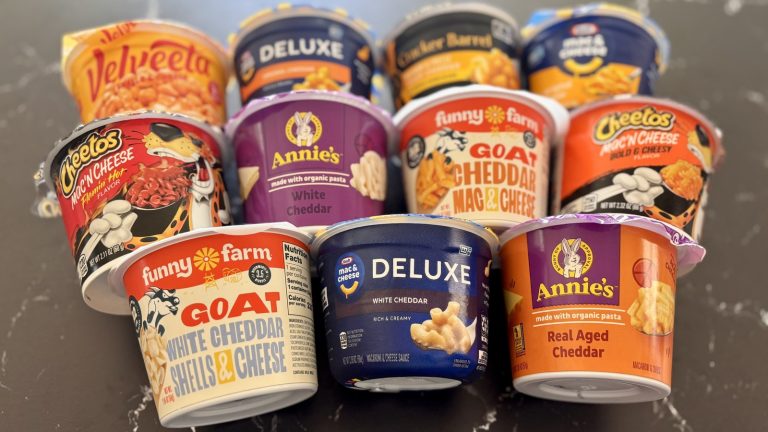With remote work on the rise, at-home lunches have become more common, and pre-preparation for midday meals less necessary. But whether your work has returned to the office or you just need an easy meal ready for you in the fridge on busy days, there’s one creative meal prep hack you might not have tried yet. Up there with peanut butter overnight oats and breakfast jar parfaits in terms of genius ways to repurpose Mason jars, pre-prepped noodle soup-in-a-jar might just be the versatile, simple, and super flavorful change of pace your lunches needed.
The method essentially has you stack soup ingredients in a tall Mason jar along with bouillon cubes, then use boiling water to cook the soup when you’re ready to eat it. Voilà: No more soggy, three-day-old soup leftovers. But as much as there is an art to creative cooking, there’s also a science to ingredient-stacking like this. Which ingredients go on which layer, and how does that change if you want to mix up the ingredients?
In general, you want to make sure any ingredients that are prone to getting soggy are far away from sauces or other liquids in the jar. Starting off with a meat or tofu layer on the bottom and drenching it in the sauces and spices can act like a marinade, strengthening the flavors of the protein. Creating a barrier with veggies like carrots and mushrooms, which are less likely to become soggy, blocks out most of the liquid, leaving the top layer dry for noodles and veggies that wilt easily like spinach.
Tips for assembling and serving your soup
The most important thing to take into consideration when you’re picking the order of layers for your Mason jar is strategically separating wet and dry ingredients. But flavor-wise, is there any reason you should (or shouldn’t) put sesame seeds next to edamame, or shredded chicken next to cucumbers? Well, not really. It is true that the items at the very bottom with the liquid will be able to absorb more flavor from the sauces you add, but when you’re ready to add hot water and eat your soup, the simplest way to do it is to it pour it all into a bowl anyway so you can get a little bit of everything in one bite.
If it’s still cold, pop either the bowl or the jar in the microwave — yes, Mason jars are microwave safe, so long as you first remove the metal lid — for a few seconds to help bring it up to temp. If you don’t want to bring a bowl with you wherever you’re headed, you could also slightly under-fill the jar, put on the lid after adding water, and shake it to combine the ingredients and seasonings. For the best results, make sure you give the vegetables and noodles ample time to warm through from the hot water before you eat your soup.
Without water, the prepped jars should stay fresh in the fridge for up to five days. And yes — after you chow down, you can toss your Mason jar (and lid) in the dishwasher for easy cleaning. Happy meal prepping, and don’t be afraid to get creative — the noodle soup possibilities are endless, from swapping out the vegetables (cabbage, anyone?) to trying different noodle types. As long as you stick to the same basic stacking principles you’ll be set for a deliciously fresh soup, no matter what’s in it.






